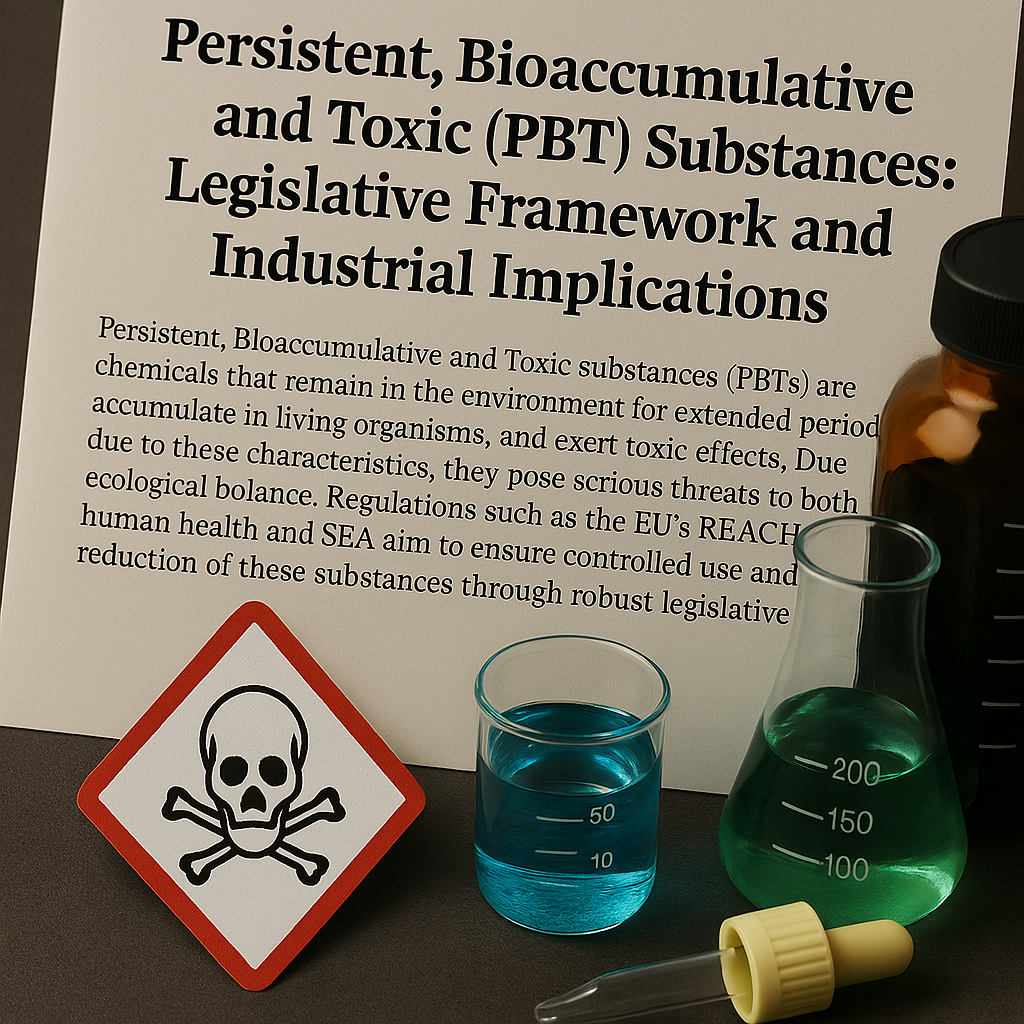Persistent, Bioaccumulative and Toxic (PBT) Substances: Legislative Framework and Industrial Implications
Persistent, Bioaccumulative and Toxic substances (PBTs) are chemicals that remain in the environment for extended periods, accumulate in living organisms, and exert toxic effects. Due to these characteristics, they pose serious threats to both human health and ecological balance. Regulations such as the EU’s REACH and CLP and Türkiye’s KKDIK and SEA frameworks aim to ensure controlled use and/or reduction of these substances through robust legislative measures.
Regulatory Perspective: PBT Classification Criteria and Legal Framework
Under Türkiye’s KKDIK Regulation and the EU’s REACH Regulation, a substance is classified as PBT if it meets the following three key criteria:
- Persistence (P): It does not easily biodegrade in the environment (water, soil, or sediment). This means the substance can persist in the ecosystem for many years.
- Bioaccumulation (B): It accumulates significantly in the tissues of living organisms. This leads to an increased concentration of the substance throughout the food chain, transferring to higher trophic levels.
- Toxicity (T): It adversely affects humans and/or organisms within ecosystems. These effects can range from reproductive disorders to cancer.
These substances are considered “Substances of Very High Concern” (SVHC) and may be listed on the Candidate List published by the European Chemicals Agency (ECHA). The KKDIK Regulation in Türkiye aligns with REACH and governs the registration, evaluation, authorization, and restriction of PBT substances. Regarding labeling, the EU’s CLP Regulation mandates that the risks of such substances be clearly indicated using appropriate GHS pictograms, signal words, EUH phrases, and precautionary statements. However, as these specific label elements have not yet been officially published in Türkiye’s Official Gazette, they are not legally enforced at present.
Industrial Use and Challenges: The Complexity of Seeking Alternatives
PBT substances may be found in various products and applications such as pesticides, certain plasticizers (e.g., phthalates), flame retardants, and industrial solvents. Historically, they were favored for their low cost and high performance. However, considering their long-term adverse environmental and health impacts, these advantages are now seriously questioned. Once released into the environment, the persistence and widespread distribution of PBT substances lead to environmental problems that are difficult to reverse.
In industry, replacing PBTs with safer alternatives is strongly encouraged through the "green chemistry" approach. Nevertheless, this transition is complex—requiring a meticulous evaluation of factors such as the technical equivalence of alternatives, their cost, and their market feasibility. Potential performance loss or increased costs can pose significant challenges for companies during this transition.
Human Health and Environmental Effects: Hidden and Widespread Threats
Human Health
- Some PBT substances are directly linked to neurotoxicity, hormonal disruptions, and an increased cancer risk. They can have detrimental effects on the nervous, reproductive, and immune systems.
- Indirect exposure through food consumption or environmental pathways is particularly hazardous for vulnerable groups such as children, pregnant women, and individuals with compromised immune systems. PBTs can accumulate in the body, potentially leading to organ damage and chronic diseases.
Environment
- PBTs accumulate in aquatic life, magnifying their effects throughout the food chain and transferring to higher trophic levels. This leads to ecosystem degradation, loss of biodiversity, and long-term environmental damage that is often irreversible.
- Their persistent nature causes prolonged contamination of soil and water, severely limiting the environment's capacity for self-recovery.
Conclusion: Shared Responsibility and a Forward-Looking Approach in PBT Management
PBT substances are subject to strict regulatory control and must be handled cautiously in industrial practice. Minimizing the use of such chemicals, promoting safer alternative solutions, and enhancing effective risk communication are critical to protecting both human health and ecosystems. Regulatory frameworks should be continuously updated in light of scientific advancements, prioritizing the protection of the environment and human health. This is not merely a legal obligation but a shared responsibility to ensure a cleaner and healthier planet for future generations.
